9. Textile as scaffold¶
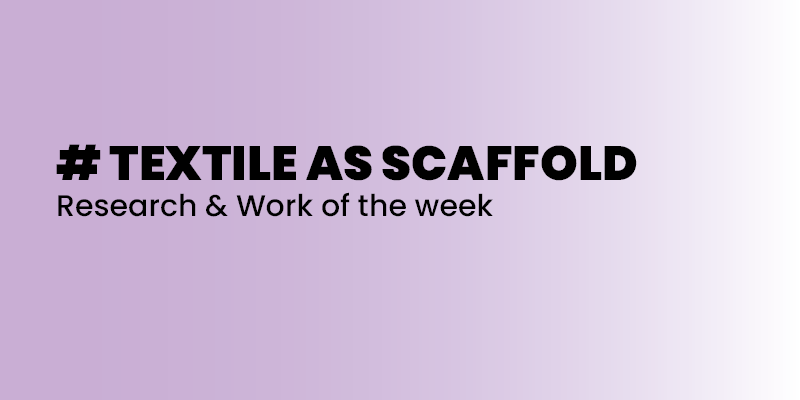
This week, I explored the textile as scaffold. I worked the textile as a support, I used different tools and machines, created my tools and transformed the propriety of textiles to questions new shapes and functions.
During the lecture of the week, we saw different approche to transform the textile in a textile technique. We can use textiles for composites, polymerisation, solidification, fabric formwork, crystallization, composites and biocomposites, agglomerates.
We focused on exploring techniques and applications of technical textiles in the industry. It introduces the concept of designing custom processes that require the design of a set of tools, processes and workflow.
Inspiration¶
First, I explored the subject and I did some researches to inspire me.
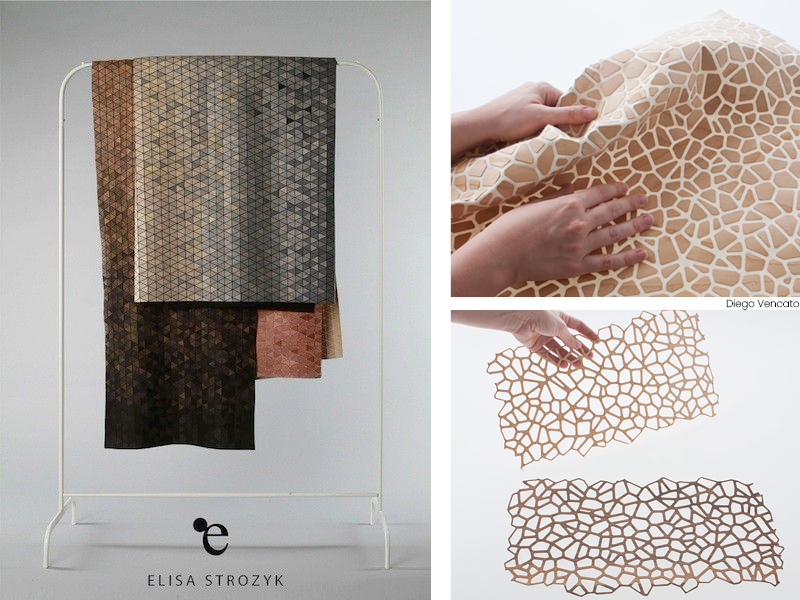

After, have found many inspirations, I definied that what I would liked to do during the week. I focus on this inspiration, because I was very interested by the optical illusion notion and also by the creation of textile composite thanks to numeric tools.
So, I decided to create a mold (with the 3D modeling), a wooden textile (with the parametric design) inspirired of Eliza Strozik work or Diego Vencato work. Also I experimented the fabric formwork (with concrete).
Tools & Machine¶
Machines of the week :
CNC Machine¶
CNC = Computer Numerical Control
A CNC machine processes a piece of material (metal, plastic, wood, ceramic, or composite) to meet specifications by following a coded programmed instruction and without a manual operator directly controlling the machining operation.
A CNC machine is a motorized maneuverable tool and often a motorized maneuverable platform, which are both controlled by a computer, according to specific input instructions. Instructions are delivered to a CNC machine in the form of a sequential program of machine control instructions such as G-code, , then executed.
At Le Textile Lab I worked with Zmorph, a machine 3 in 1, with a CNC function. This machine print a 3D molding in subtraction.
Vaccum forming¶
Vacuum forming is a manufacturing method used to shape different materials. During the vacuum forming process, a sheet of material is heated and then pulled around a single mold using suction.

Work of the week¶
Mold¶
Molding on Rhino 3D.
Import the file .obj on Voxelizer:
- On VOXELIZER software, to importe a .obj or .stl file
- Manage the file on the software (mold dimension, setting speed, start depth,...)
- Then, the software will estimate the time of printing
- Exporte the gcode file after to have managed on Voxelizer and add on a SD card to put the file in 3D printing
Note : The file exported of Voxelizer is a code file in X,Y,Z to informate the way of printer.
Prepare the CNC machine, the block to mold, importe the file in the machine and set the parameters.
I glued the block perpendicularly on the layer with an adhesive.
Then, I informed the machine where is the Z : 0 / Y : 0 / X : 0, to know its starting point and I started the file.
But... Failed... Twice !
I think, I used a wood block too strong for this machine. When it cut in a too hard place in the wood, the machine failed and resets its parameters. The cut has changed location and did not follow its initial way. So my mold was failed.
After the firt error, I tried to change my file and its parameter on Voxelizer software. After the second error, I saw that was the machine and the wood. So, I decided to try one last time and to change the material of my mold.

And it is done !
I changed the block wood by a tick polystyrene.
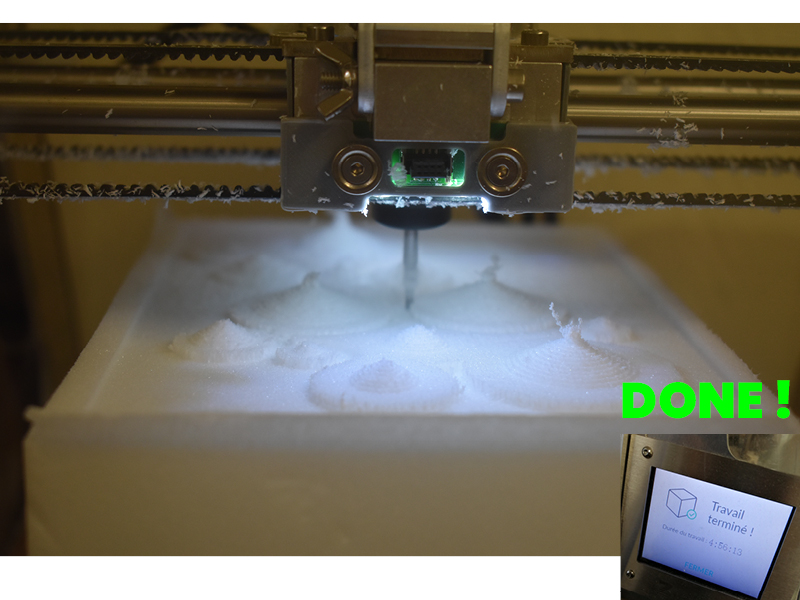
Wooden textile¶
To experiement the wooden textile, I decided to create a parametric pattern. For that I used Grasshopper on Rhinoceros 3D and I did again one of the exercices of the week 7 (computational couture).

 ▶︎ .3dm file - rhino 3D
▶︎ .3dm file - rhino 3D
▶︎ .gh file - Grassohpper on Rhino 3D
After to have cut my pattern with the laser cut, I had to glue wood elements on my fabric (I chose a black neoprene). To glue my wood pattern on the textile, I used the negative of my pattern to help me. It was like a puzzle.

Fabric formwork¶
During my master at school, I have already explored the ciment and plaster combined with fabrics. Below, my old experimentations between plaster and textile.
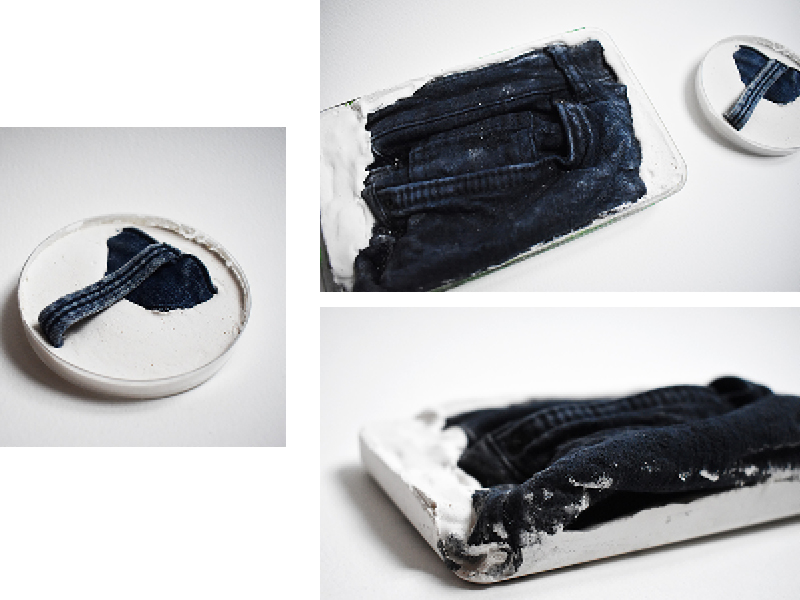

During the week, I decided also to experimented concrete and textile. In my inspirations, I was very curious by the possibility to create optical illusion with concrete, so, I wanted to transform the flexible textile, constraint it, to fix these folds and textures. For that, I experimented different molding ways.
Sewing imprint in concrete :
Textile dipped in concrete and crumpled - Concrete moulded on bubble wrap :
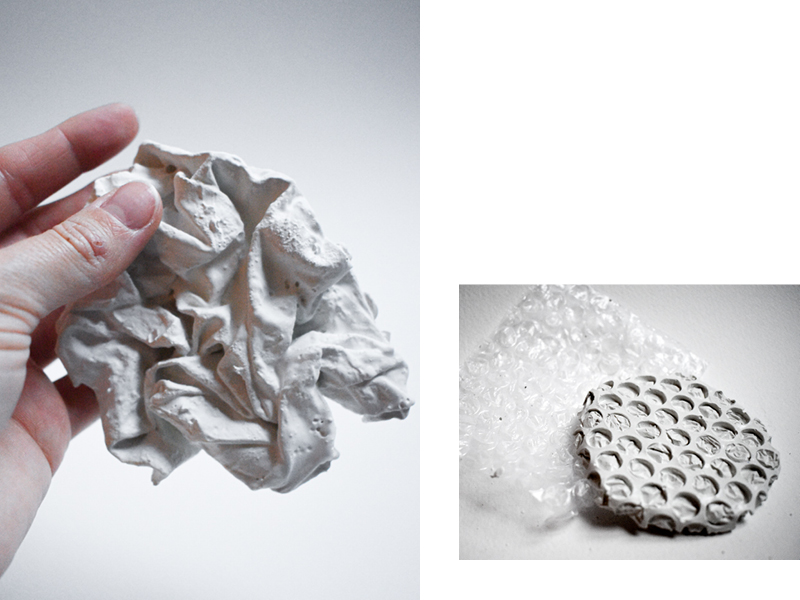
Woolen knitwear dipped in white concrete and molding on a bubble wrap :
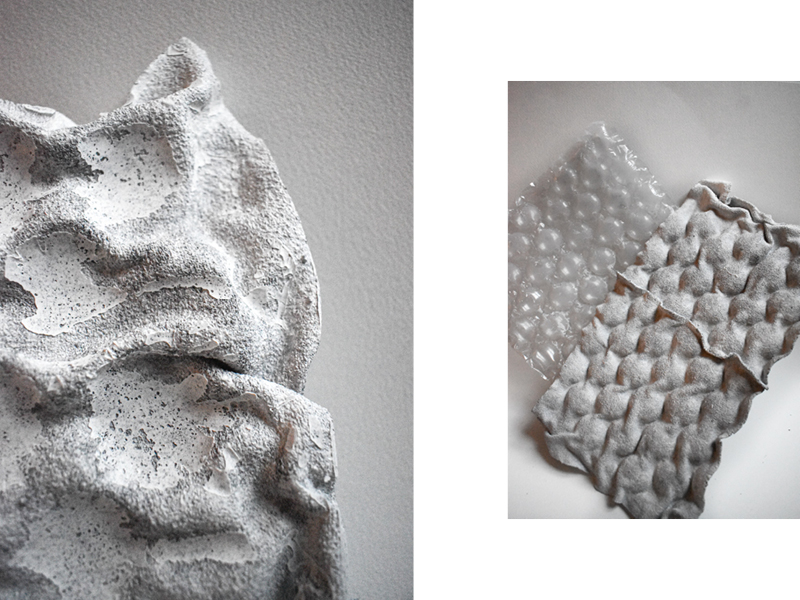
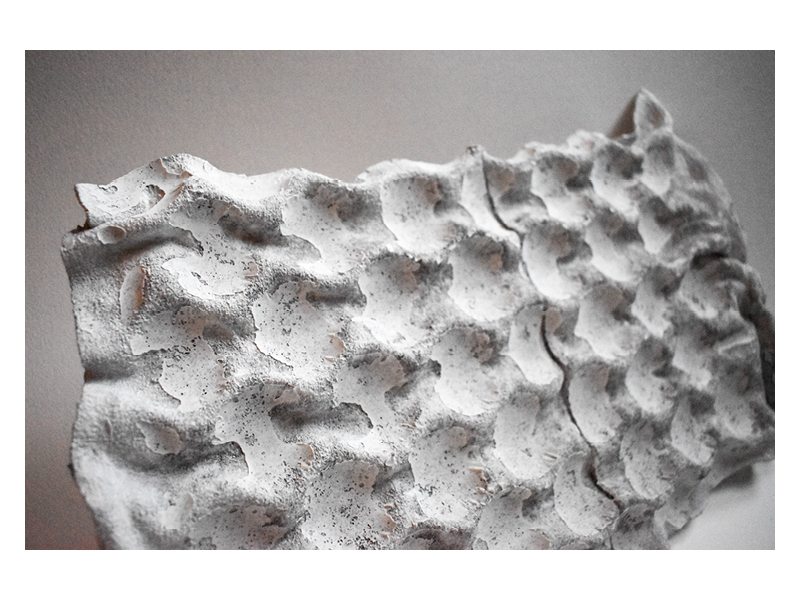
Grey concrete molding on a textured textile folded :

In conclusion, when the textile, dipped in concrete and molded in different shapes, is dry, it gives a good result. That creat a fragile and precious dimension to the fabric.
Useful links¶
- Lecture of the week
- Tutorial Crystallization
- Tutorial Rhino CAM -Textile as Scaffold
- Review of the week
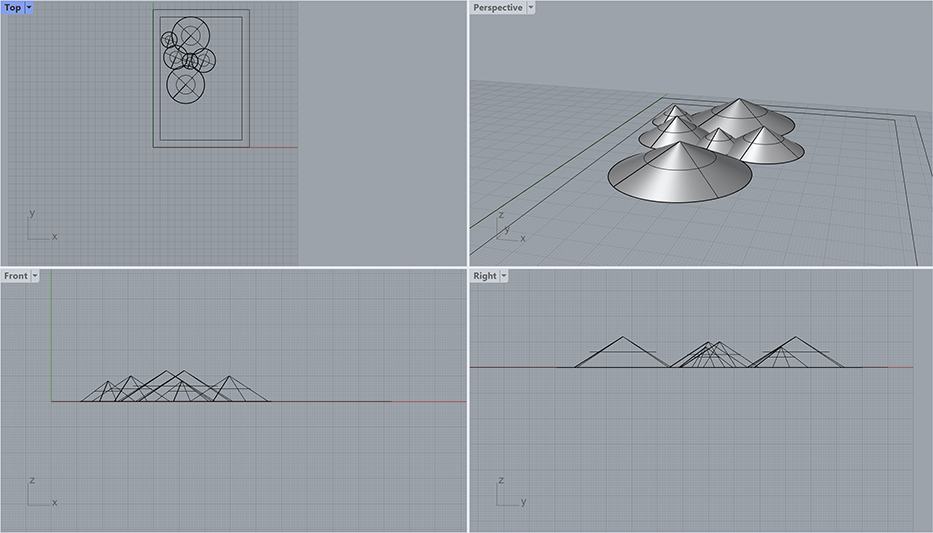 ▶︎
▶︎